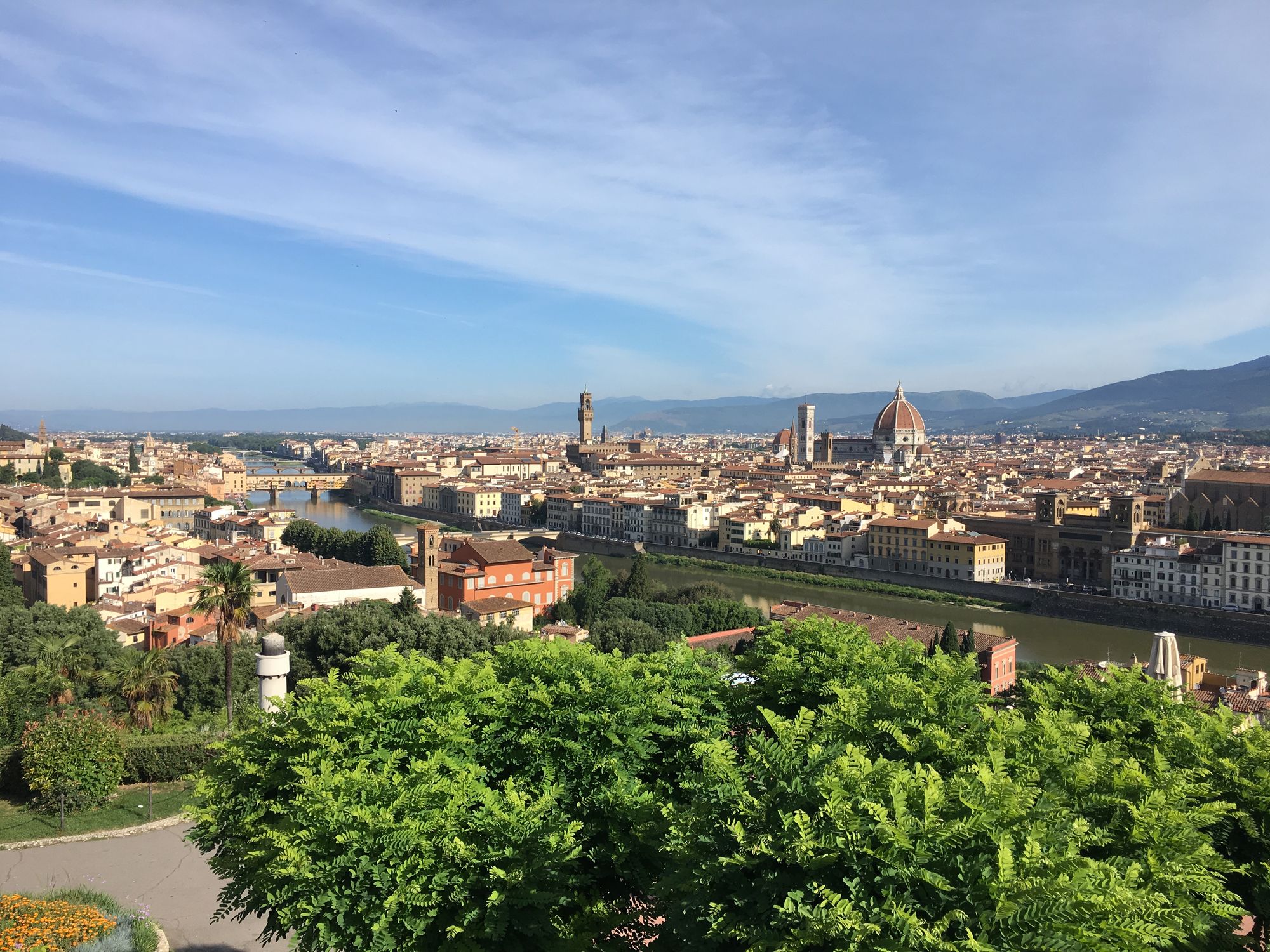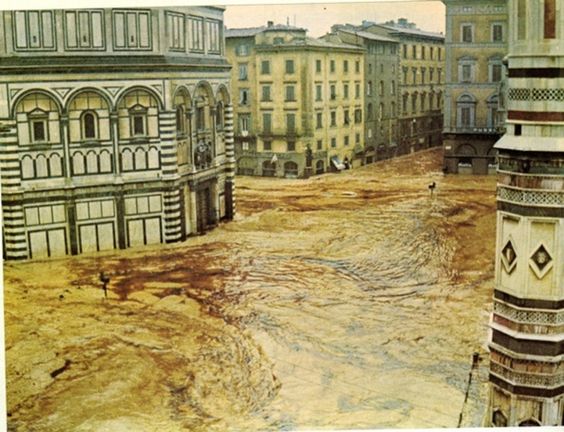On the night of 3rd November, 1966, the people of Florence went to bed as usual. The heavy rain was nothing unusual for a November night, but this night was to be unlike any other in living memory.
The Arno river, which flows through the centre of Florence, is used to high water, especially in the spring and autumn. The rain runs down the Apennine mountains and 240km later, flows out to the Ligurian Sea. Dams along the way in the Valdarno usually control the flow, but there was nothing usual about this quantity of water. It amounted to 25% of the region's annual rainfall in just 24hrs.

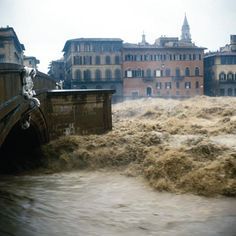

Overnight, cellars in the Santa Croce area of the city began to flood, and by the morning, the flooding had reached ground level. Power failed, and even the hospital's emergency generators were cut. By early morning of the 4th November, the water had reached the Piazza del Duomo, circling the jewel of Florence's crown, the Cathedral of Santa Maria del Fiore, and sweeping through homes, shops, churches, museums and civic buildings.
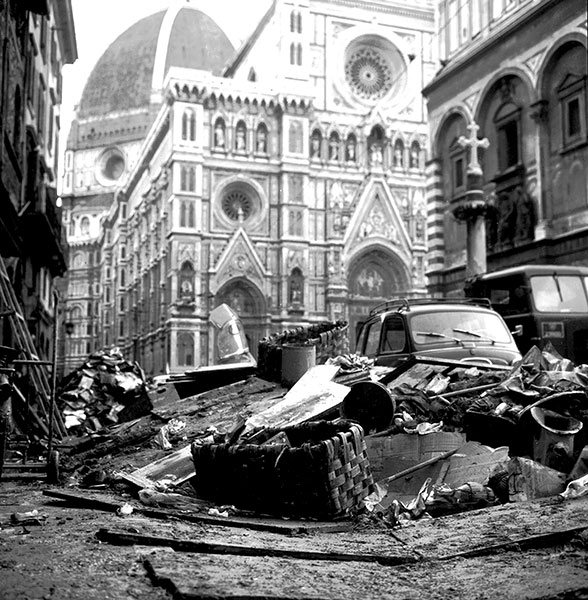
Not only was the city invaded by river water, but by sludge, oil, and debris. Over 20,000 people were made homeless, 10,000 cars wrecked, and more than 100 people lost their lives. There was no drinking water, phone services or electricity, and the streets were strewn with rotten food, animal corpses and sewage.
Museums and churches were ravaged, and much of their priceless art destroyed, including paintings, frescoes, manuscripts and sculptures. The 17 foot doors of the Baptistry displaying the 15th Century bronze panels by Ghiberti, referred to by Michelangelo as "The Gates of Paradise", were knocked off by the flood waters. A historic 13th Century crucifix by Cimabue was destroyed, just two examples of how the flood devastated this centre of Renaissance art.

But Florence is nothing if not resilient. The city inspires so many around the world, that an appeal for help brought another flood, this time of volunteers. As well as professional art restorers and scholars, young people came to the city to simply help the Florentines emerge from the oil and sludge, to transfer priceless works of art to safety, to bring food and water to the elderly, to bring hope. These helpers became known as Mud Angels or Angeli del Fango, and their work has become legendary.
Aid came from many corners of the globe, none more poignant than the parcels of toys and clothes sent from Aberfan in Wales, just two weeks after the devastating landslide of coal waste that killed 116 children and 28 adults.

Today, all around the city, there are reminders of that night. Look for the flood markers on the walls of homes and shops, showing the levels that the waters reached. Here's a picture I took not far from Santa Croce. Yes, the flood marker is next to the upper window. Imagine that!
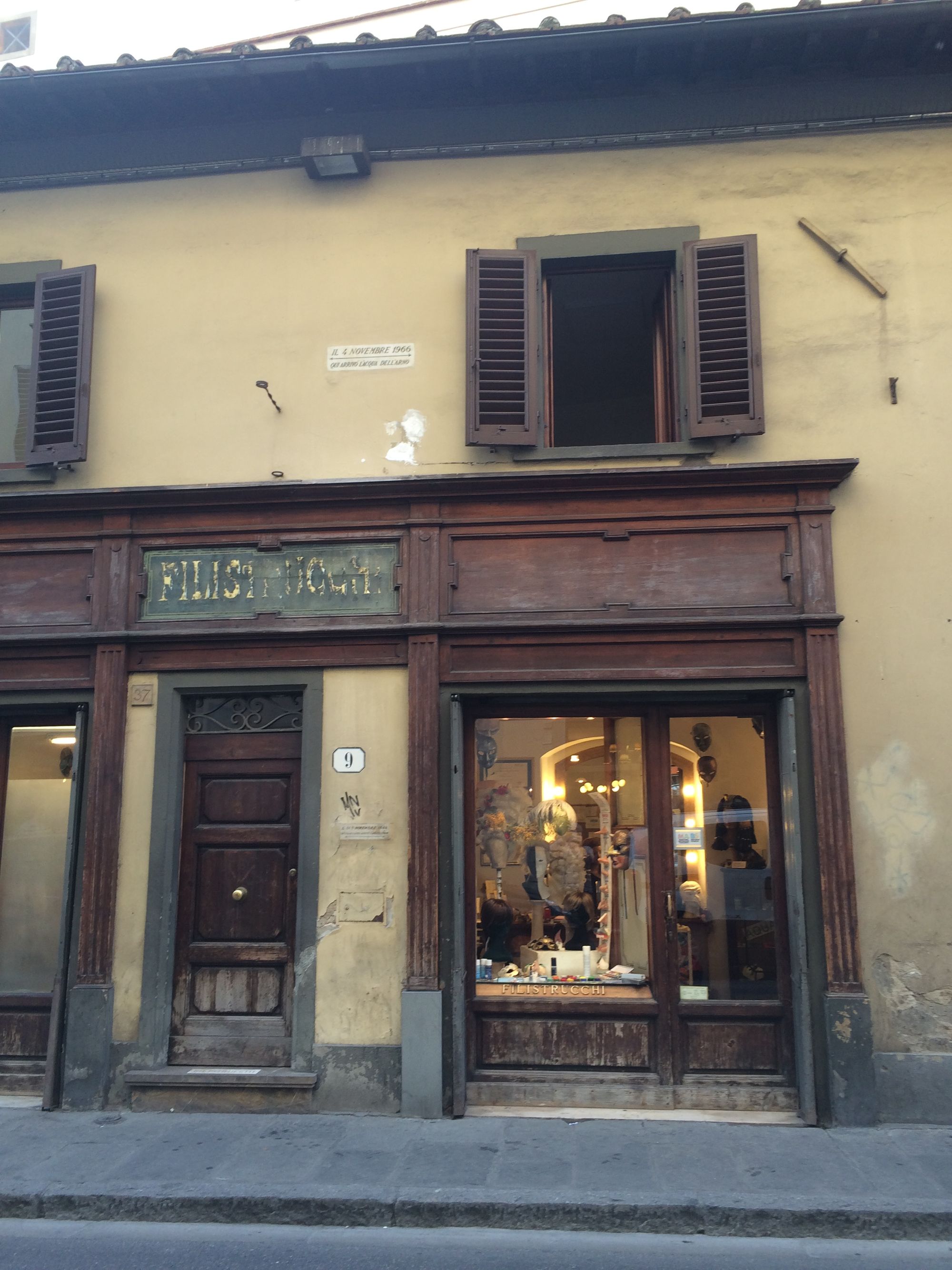
Dante Alighieri, some 600 years before the flood, referred to the River Arno as "the cursed and unlucky ditch", and no doubt, in November of 1966, there were many who would have agreed with him. But what would Florence be without her Arno?
